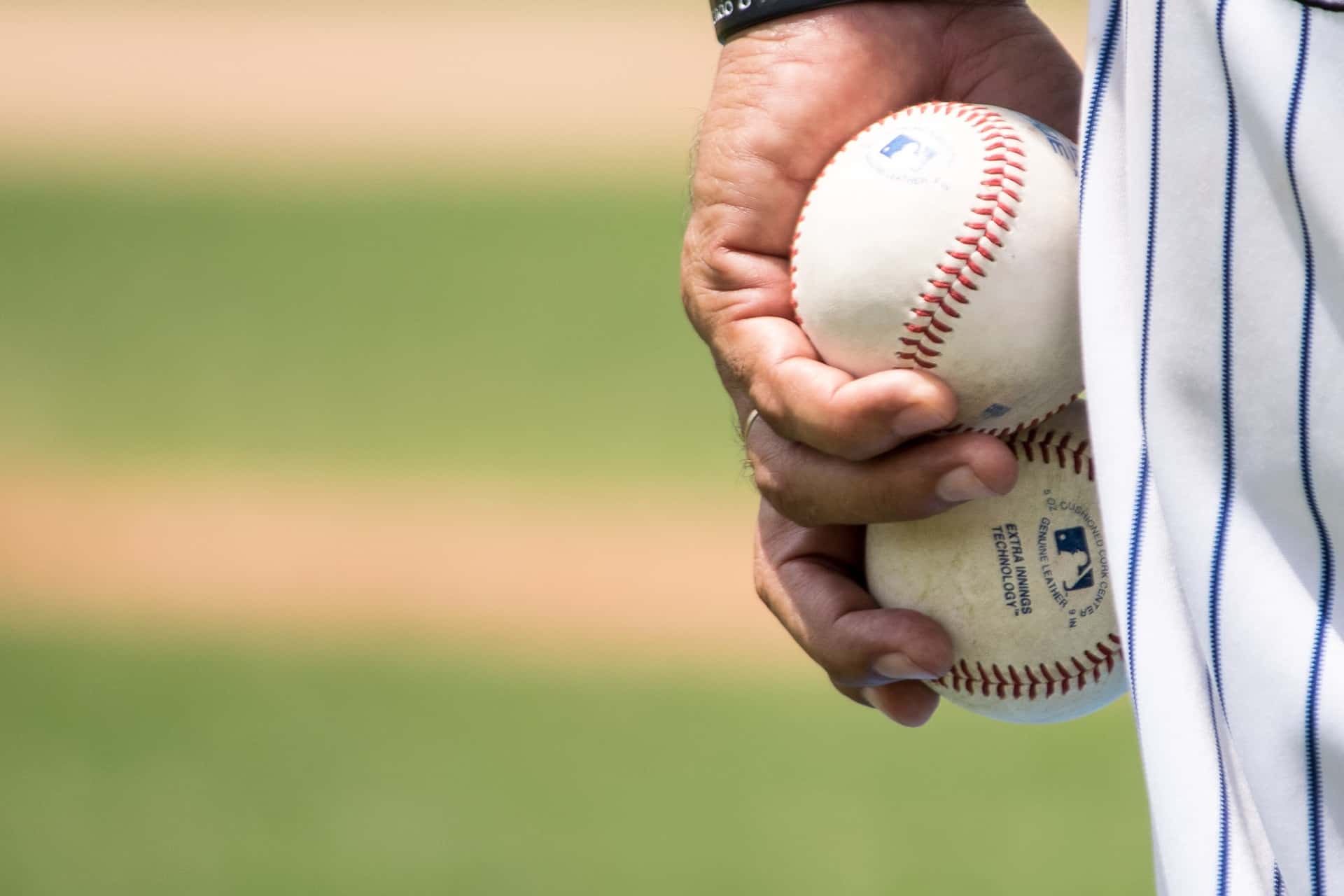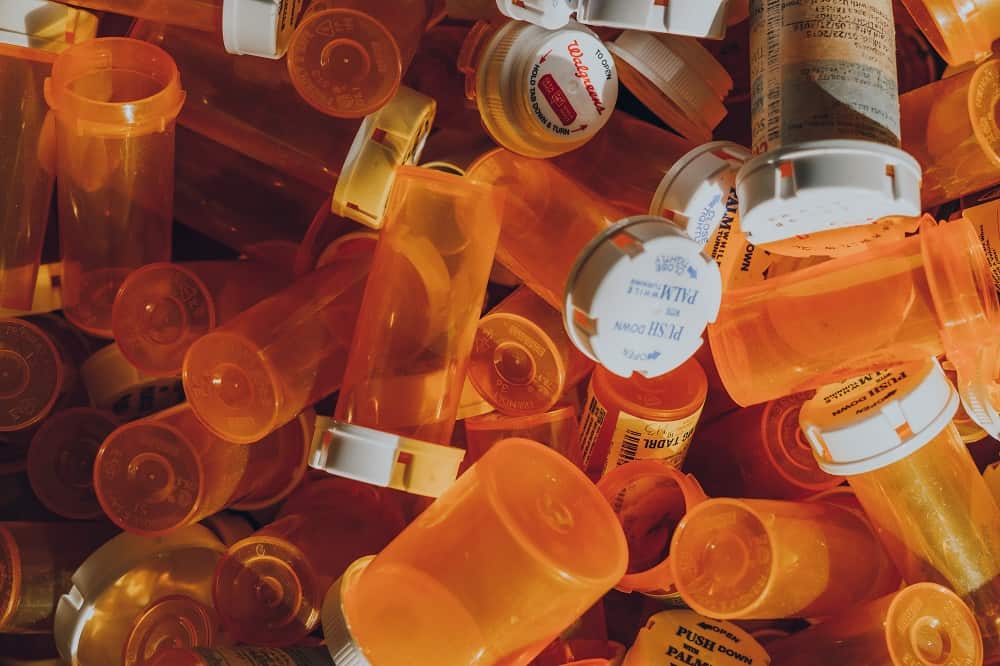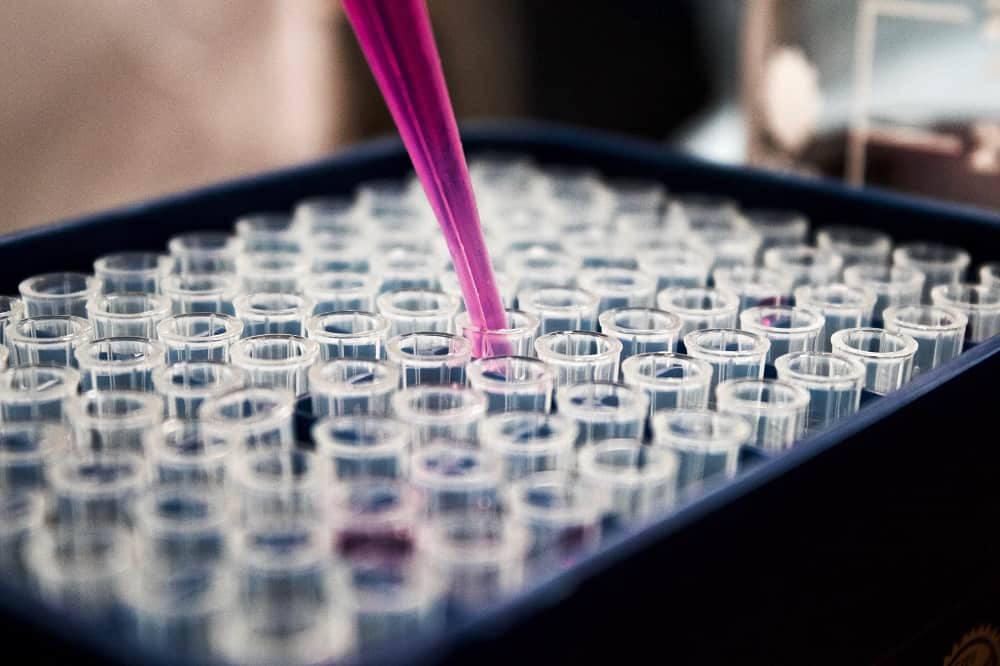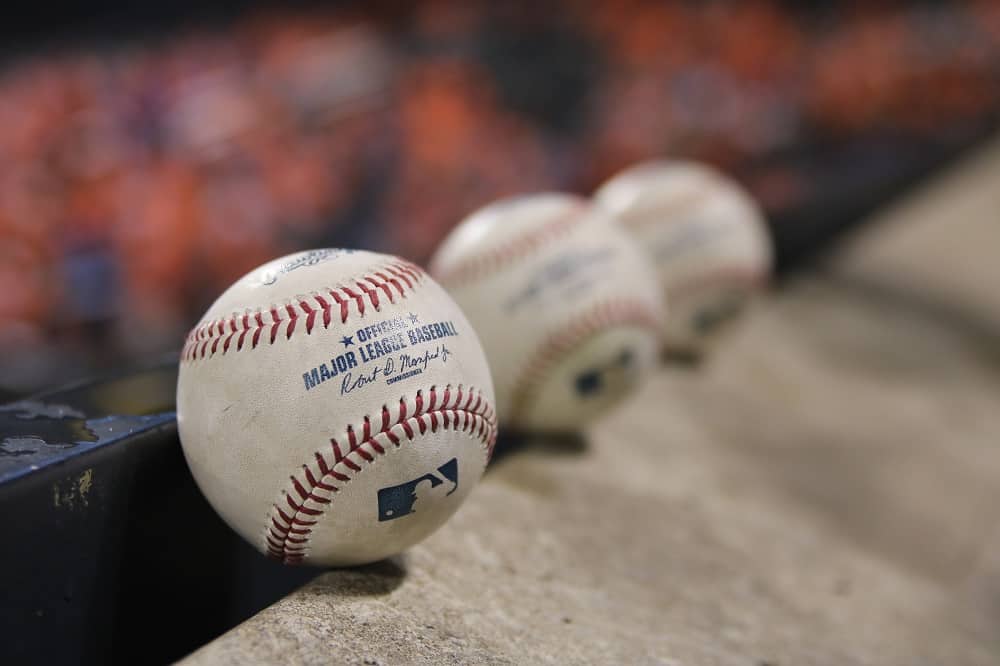“We are heartbroken to learn that the passing of our beloved Tyler was the result of a combination of dangerous drugs and alcohol. That is completely out of character for someone who worked so hard to become a Major League Baseball player and had a very promising future in the game he loved so much.”~ Statement from the family of Tyler SkaggsOn the afternoon of July 1, 2019, Tyler Skaggs, a starting pitcher for the Los Angeles Angels, was found dead in a hotel room in Southlake, Texas. The Angels were in town to play a four-game series against the Texas Rangers, and Skaggs was scheduled to pitch in the finale on July 4th.He was only 27 years old, and left behind a wife of one year.On August 30, the Tarrant County Medical Examiner’s toxicology report announced Skaggs’ cause of death as a combination of “alcohol, fentanyl, and oxycodone intoxication with terminal aspiration of gastric contents.”This means that while he was overdosing on the fatal mix of opioids and alcohol, Skaggs choked to death on his own vomit, an inglorious and wasteful end for someone still so young and who had so much of a promising career still ahead of him.Once the ME’s findings were made public, the Angels released a statement, saying, “Tyler was and always will be a beloved member of the Angels family and we are deeply saddened to learn what caused this tragic death.”
Part of a Much Bigger Problem
NOTE: This list focuses on the use of recreational drugs by MLB players, not the use of steroids or other performance-enhancing drugs. And, while amphetamines are often used to increase athletic performance, they are included here because of their additional potential for recreational misuse.”In order to prove myself, I was supposed to be tested on a regular basis. ‘I didn’t care if it was twice a week. But twice in one year? It’s a joke…”I don’t see where he (Ueberroth) is doing his part. What has he done? He’s done nothing except go to the Little League World Series and say, ‘Baseball is free of drugs’…Well, I’ll tell you right now, there’s a couple of guys I played against this season in the minors that were taking greenies and smoking pot. So how can he say baseball is free of drugs?”~ Lonnie Smith, in a 1987 interview
“Get the help you need today. We offer outpatient assistance, so you can maintain your work, family, and life commitments while getting the help you deserve!”
But as tragic as Skaggs’ death is, it highlights a larger truth — Major League Baseball has a Major League Drug Problem, and it has had one for decades. Some of the more notable instances include:
- Joaquin Andújar: A 2-time All-Star and Golden Glove winner, Andújar was found by the Baseball Commission to have dealt cocaine to at least seven other players.
- Dale Berra: Son of Hall of Famer Yogi Berra, he admitted to using cocaine while a member of the Pittsburgh Pirates. After he retired, he was charged with cocaine distribution in New Jersey.
- Enos Cabell: Admitted to cocaine use and was suspended for an entire season. The suspension was waived in place of community service and large anti-drug donations.
- Miguel Cabrera: In 2010, 2-time American League Most Valuable Player, 4-time batting champion, and 11-time All-Star Cabrera checked into a rehab facility for three months to address his alcohol addiction. However, in 2011, he was arrested in Florida on suspicion of drunken driving.
- Leandro Caminero: In 2016, Caminero, a former minor league player for the Tampa Bay Devil Rays, was arrested in New York City while trying to smuggle 11 heroin tablets he had swallowed.
- Mike Cameron: Playing for eight MLB teams during a 16-year career, Cameron was suspended for the first 25 games of the 2008 season after testing positive for amphetamines.
- Ken Caminiti: 3-time All-Star and 1996 National League MVP Caminiti battled alcoholism and cocaine addiction throughout and after his career. In 2004, 41-year-old Caminiti died from a “speedball” overdose, a combination of cocaine and heroin.
- Lenny Dykstra: During and after his career, 3-time All-Star Dykstra has been in several serious incidents involving various drugs, including alcohol, cocaine, Ecstasy, and methamphetamine.
- Dock Ellis: All-Star pitcher Ellis has stated that he threw his 1970 no-hitter while under the influence of LSD.
- Jose Fernandez: Formerly a NL Rookie of the Year and a 2-time All-Star, Fernandez was killed in a boating accident in 2016, at the age of 24. The toxicology report revealed that Fernandez was legally drunk and had cocaine in his system at the time of his death.
- Jeremy Giambi: Younger brother of Jason Giambi, he was arrested for marijuana possession at a Las Vegas airport.
- Dwight Gooden: Winner of the 1984 NL Rookie of the Year and 1985 Cy Young Awards, Gooden’s career and personal life have been severely impacted by cocaine and alcohol addiction. During his career he tested positive for cocaine on multiple occasions, and was even suspended for an entire season. His post-playing days have been plagued by DUI arrests, probation violations, and even a prison sentence.
In 2019, Gooden’s struggles continue. In June, he was arrested on DUI and cocaine possession charges. In July, he was arrested again for yet another DUI in late July. In September, Gooden pled guilty to cocaine possession and will be going back to rehab.
- Josh Hamilton: AL MVP and 5-time All-Star Hamilton was considered to have the potential to be one of the greatest players of his generation. But even before his first major league game, Hamilton failed multiple drug tests, and was out of baseball for three years. Throughout his career, Hamilton would relapse several times on cocaine or alcohol, and at one point was being drug-tested three times a week.
- Keith Hernandez: A NL batting champion and 5-time All-Star, Hernandez admitted to even playing while high on cocaine. In 1980, he testified that up to 40% of MLB players that year used cocaine.
- Al Holland: Briefly a top relief pitcher, Holland was one of the players disciplined for cocaine use following the Pittsburgh drug hearings conducted by MLB.
- Steve Howe: Howe was the 1980 NL Rookie of the Year, but his career was ultimately derailed by alcohol and cocaine abuse that led to seven drug suspensions by MLB. In 2006, Howe died in an automobile crash with methamphetamine in his system.
- Lee Lacy: A 16-year MLB outfielder, Lacy was also a player named in the Pittsburgh drug trials.
- Jeffrey Leonard: Also caught up in the Pittsburgh drug trials, Leonard and other players were said to have engaged in a “prolonged pattern of drug use” and distribution.
- Esteban Loaiza: In 2017, 2-time All-Star Loaiza was arrested in San Diego with 44 pounds of heroin and cocaine.
- Mickey Mantle: Regarded as one of the greatest players in history, 16-time All-Star, 3-time AL MVP, and 7-time world champion Mantle was a functioning alcoholic for over 40 years. The damage to his body was so severe that at one point, the doctor told him, “Your next drink could be your last.”
- Shane Monahan: After a very brief “cup of coffee” career with the Seattle Mariners, Monahan later admitted in an interview that he had used amphetamines as a player. His case is noteworthy, because in addition to himself, Monahan also named other players whom he had allegedly witnessed using banned substances.
- Dave Parker: A 2-time batting champ, 7-time All-Star, and 1978 NL MVP, Parker was one of the players named in the Pittsburgh drug trials.
- Neifi Perez: A Golden Glove winner in 2000, Perez tested positive for amphetamines on three occasions, effectively ending his career.
- Tim Raines: A batting champion and 7-time All-Star, Raines had to enter drug rehab his second year in the majors. He has since admitted that his cocaine addiction was so bad that he would even use between innings.
- C.C. Sabathia: In 2015, former Cy Young winner and 6-time All-Star Sabathia checked himself into an alcohol rehab program, missing the Wild Card playoff game.
- Josh Sale: In 2010, Sale was a first-round pick in the MLB draft. But after two failed drug tests where he tested positive for methamphetamine, Sale never played in the majors.
- Lonnie Smith: One of the top base-stealing threats of the 1980s, Smith checked into drug rehab for cocaine addiction in 1983 and was later named in the Pittsburgh drug trials of 1986.
- Darryl Strawberry: Formerly the NL Rookie of the Year and an 8-time All-Star, Strawberry was suspended three times for substance abuse, leading to a career robbed of massive potential. Even during his final season, he was still using cocaine, and he continued to struggle after retiring in 1999.
- Claudell Washington: A two-time All-Star, Washington was yet another player sanctioned for cocaine use during the Pittsburgh drug trials.
What is the Major League Baseball Drug Policy?
Interestingly, random drug-testing didn’t take place at the Major League level until 2003. Currently, the MLB drug policy prohibits 76 performing-enhancing substances, 56 stimulants (including methamphetamine), 56 diuretics and masking agents, and 10 additional drugs of abuse, including:
- Natural cannabinoids: Marijuana, hashish, and THC
- Synthetic cannabimimetics: K2, Spice, etc.
- Cocaine
- LSD
- Opioids: Heroin, Morphine, Codeine, Hydrocodone, Oxycodone, etc.
- Methylenedioxyamphetamine (MDA)
- Methylenedioxymethamphetamine (MDMA, Ecstasy)
- “Bath Salts” (i.e., Cathinone and Synthetic Cathinones)
- GHB
- Phencyclidine (PCP)
But there is a serious gap in this policy. By union rules, players in the major leagues are NOT tested for “drugs of abuse” without probable cause or unless that player is in a opioid treatment program. That effectively means that as long as there are no incidents, a pro baseball player can abuse drugs with very little fear of actually getting caught.For substances that have a legitimate medical use — opioid painkillers, for example — players can apply for a Therapeutic Use Exemption.
“We treat both addiction and co-occurring disorders and accept many health insurance plans. Take a look at our outpatient program today!”
Risk Factors are Magnified among Pro Athletes
Professional athletes are subject to the same risk factors for substance abuse as everyone else — genetics, peer pressure, trauma, mental illness, or environment, for example. But playing baseball in the major leagues means a whole new set of challenges that can make that risk even worse:
- Constant scrutiny — From coaches, the public, and the media
- Pressure to perform — With future financial security and even employment dependent on things like batting average, win-loss record, or earned run average
- Hostile crowds — Being booed by thousands of people on a nightly basis, for example
- Constant travel — extended road trips, playing in different time zones, etc.
- Long hours
- Boredom
- Loneliness
- Injuries and having to “play through pain”
- Being placed on the disabled list
- Witnessing substance abuse by teammates
- Sudden wealth, often with no one to advise them
- The permissive atmosphere enjoyed by sports stars
With these added pressures, even someone who is not already genetically- or environmentally-vulnerable to substance abuse might succumb to temptation. For example, they might drink to bond with their teammates or to relieve boredom on the road. They might pop an upper or use cocaine to have more energy in a game. And of course, they will need pain medication to deal with injuries, especially those nagging issues that don’t have time to properly heal during the long grind of a season 162 games or more.
Pressure to Play through Pain
While not generally considered a true contact sport, baseball still sees more than its share of serious injuries. A look at the injury report shows dozens of players missing games due to strains, sprains, contusions, concussions, tears, soreness, and tightness, as well as those players with more serious injuries that ended their seasons.In 2018 over 700 MLB players spent at least part of the season on the disabled list, and between 2003 and 2017, costing teams $7 billion in salary. That means teams have an enormous financial incentive to get players back in the game.The players feel are under even more pressure. Injured players may feel as if they are letting the fans or their teammates down. Most contracts are also heavily incentivized, with bonuses based on performance milestones. Finally, a player who spends too much time injured and on the disabled list is at a disadvantage when it comes time to sign their next contract.Many athletes make the conscious decision to play hurt — soaking in ice baths, getting cortisone injections, wraps and braces for support…and opioid painkillers.
Sports Injuries and the Risk of Opioid Addiction
The transition from injury to abuse and addiction follows a predictable pattern.The player gets hurt — they pull a muscle, tear a ligament, or break a bone. The team trainer looks at the injury and sends them to a sports medicine doctor or orthopedic surgeon. To reduce their discomfort to manageable levels so they can still function, or to ease post-surgical pain, they are prescribed opioid medications like OxyContin, Percocet, or Vicodin.But the season is long, and invariably, there are setbacks and new injuries, which means more painkillers. And while opioids have a legitimate medical use, they are also powerfully addictive. They have a numbing effect on stress and uncomfortable emotions. What’s more, long-term use triggers changes to the brain so the person becomes dependent on the drug to feel normal. This is the first step on the road to abuse and addiction.
Why Opioids… and Why NOW?
“We have not received from our medical community any information that would lead us to believe that opioids are a widespread issue in baseball.”~ MLB Deputy Commissioner Dan HalemTop executives in Major League Baseball do not believe opioid abuse is a significant problem among players. They feel that in the specific case of Tyler Skaggs, his death was a tragic aberration.On the one hand, Deputy Commission Halem may have a point. There hasn’t been a rash of opioid poisonings reported among baseball players, after all. To back that, we can look at statistics from the minor leagues.Unlike as in the majors, minor league players are not represented by a union. So, with more power, the Minor League Commissioner’s office does mandate random testing for opioids. Over the past five years, over 78,000 drug tests were administered.Only 12 came back positive for opioids.However, just when you might expect baseball to use those statistics to basically sweep this whole incident under the rug and move forward as fast as possible, they instead made a surprising announcement.
Are Changes in Store for the MLB Drug Policy?
“For several reasons, including the tragic loss of a member of our fraternity and other developments happening in the country as a whole, it is appropriate and important to reexamine all of our drug protocols relating to education, treatment, and prevention.”~ Tony Clark, Executive Director, Major League Baseball Players AssociationOn September 6, 2019, the Wall Street Journalreported that in the wake of Tyler Skaggs’ death, the players union and the Baseball Commissioner’s office are expected to meet to discuss expanding the current drug policy to include random opioid screening, similar to the minor leagues. And while these talks so far are in the very preliminary stages, the two sides have found common ground in recent years on drug-related issues.Although positive opioid tests are very rare in the minor leagues, MLB executives are said to be pushing hard for this policy change. The reasoning is based on the awareness that major league players have more money and have to endure a longer season than players in the minors. Both of these factors could mean that opioid abuse is more prevalent among major league players.
“We accept many health insurance plans. You can get your life back in order with our outpatient program today!”
What Does All This Mean?
It would almost seem like poetic justice if the senseless death of a popular young player like Tyler Skaggs could be the catalyst that changes how Major League Baseball tests for opioids, the single-deadliest class of drugs. Right now in America, approximately 70% of overdose deaths involve opioids.If through this proposed change, “America’s Pastime” can bring greater public awareness about the dangers of opioid abuse, lives will be saved and Tyler Skaggs will not have died for nothing.





